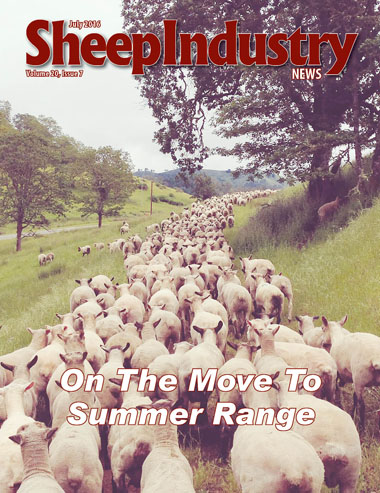
- July 2016
- President’s Notes
- Yellowstone Menus Offer Lamb
- ASI Comments on Behalf of USSES
- ASI Photo Contest
- Industry Recommends Research Priorities
- Sheep Center Sets Grant Deadline
- Sale Strengthens Lempriere
- Appropriations Update from Washington, D.C.
- Guaranteed for Life
- Young Entrepreneur: Sarah Spear
- CSU Vet Team Works Wyoming Ranch
- NSIP Offers Producers Online Tools
- Obituary
- Market Report
- Around the States
- The Last Word
Sale Strengthens Lempriere
Major changes at the top of Lempriere (Australia) shouldn’t trickle down to American sheep producers or wool warehouses despite the company’s recent merger with CS Agriculture, which is owned by China’s Shandong Ruyi.
In a deal that was officially announced on May 31, William Lempriere will step away from the fifth-generation, family-owned business to focus on other interests.
“Shandong Ruyi is a private company that was established in 1972 and is the No. 1 textile and apparel manufacturer in China with sales in excess of $3 billion,” said longtime Lempriere CEO Michael Davis in a release announcing the sale. “Ruyi is excited with the merger of these two businesses as it creates a financially stronger and complimentary Australian Group, expanding their soft commodity activity upstream. Ruyi has confirmed its commitment to the existing autonomy and management of the Lempriere business, which remains unchanged with myself as CEO and the autonomous Divisional Manager’s that you deal with every day. In the U.S., this is Rick Powers and the team of Jason Bannowsky and Grace Lang.”
The sale is expected to be completed in August.
“We don’t see any indication of changes at this point,” Powers said while discussing the sale in June. “We’ve been partners with Ruyi for several years in Cubbie Station, and the perception is that they are very hands-off. The benefit is that this gives us the potential to do more at Lempriere.”
Now one company, Lempriere and Ruyi went into business together with the purchase of Cubbie Station (near Dirranbandi, Queensland, Australia) in 2012. At 240,000 acres, Cubbie Station is the largest irrigation property in the southern hemisphere.
According to a story in Australia’s The Land, “Lempriere has been the world’s largest wool merchant since 2009. In March 2013, Lempriere Group expanded its global reach following the $31 million purchase of New Zealand’s largest wool exporter, New Zealand Wool Services International.
“The growth in the agribusiness group continued last year when Lempriere acquired a 45 percent shareholding in New Zealand-based Cavalier Wool Holding as part of a move to merge wool scouring operations with WIS,” the story continues. “At the time, Lempriere managing director William Lempriere said the merger was part of wool industry consolidation.”
Long established in Australia, Lempriere is just a dozen years old in the United States. The company buys American wool mostly through established warehouses, such as Groenewold Fur and Wool Company, Roswell Wool, Utah Wool Marketing, Great Plains Wool, Producers Marketing Coop, Bollman Industries (Texas) and Center of the Nation Wool. The majority of sales of American wool are mainly through the company’s topmaking business, but scoured and raw wool trading into the U.S., Mexico, China, India and Europe will continue to be an important part of the business.
“From time to time, we’ve had direct links with some of the larger producers out west,” Powers said. “When we’ve dealt directly with these producers, it was on volume and with producers who were looking to do something out of the box, and gain access to upstream clients. We will continue to facilitate these types of win-win partnerships when they present themselves.”
With the sale, Lempriere should eventually have access to expanded capital.
“We believe that in the next 12 to 18 months we could be looking at additional growth opportunities,” Powers said. “It’s an encouraging time for everyone at Lempriere.”
Consolidation in the wool industry is nothing new according to Powers. Looking back 25 years or so, many of the world’s wool companies were family owned operations. Volatile wool prices in the 1990s led to corporate entities taking over many of the family-run businesses. More changes followed in the early 2000s as manufacturing in the fashion industry shifted to China.
“In the last 10 years, we’ve seen a mix of shifts back to family-owned wool businesses, as well as several Chinese corporations coming into the industry,” Powers said. “This change is part of a trend in business.”

